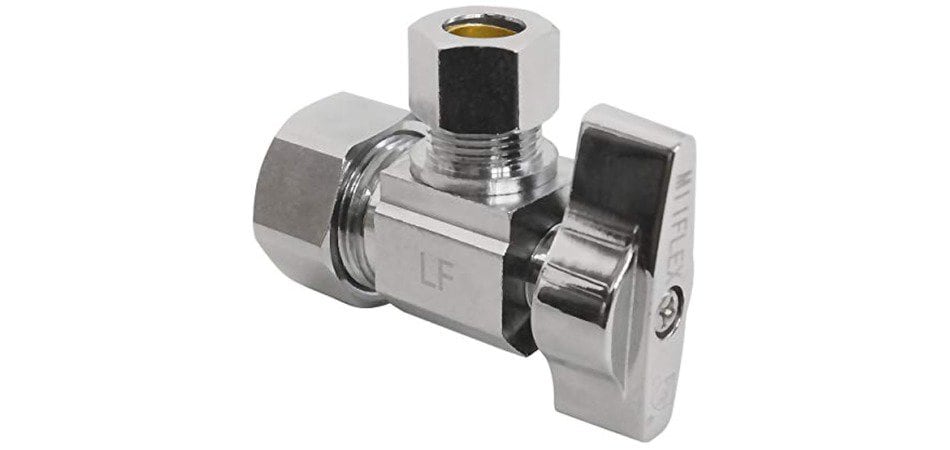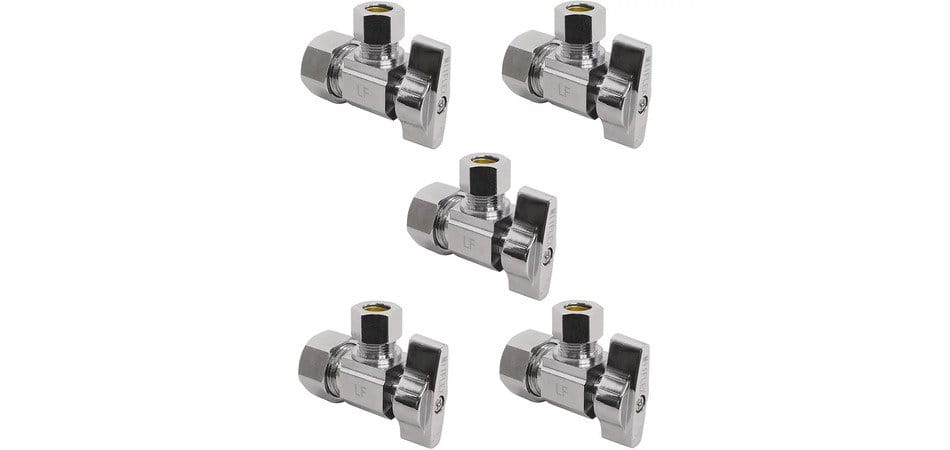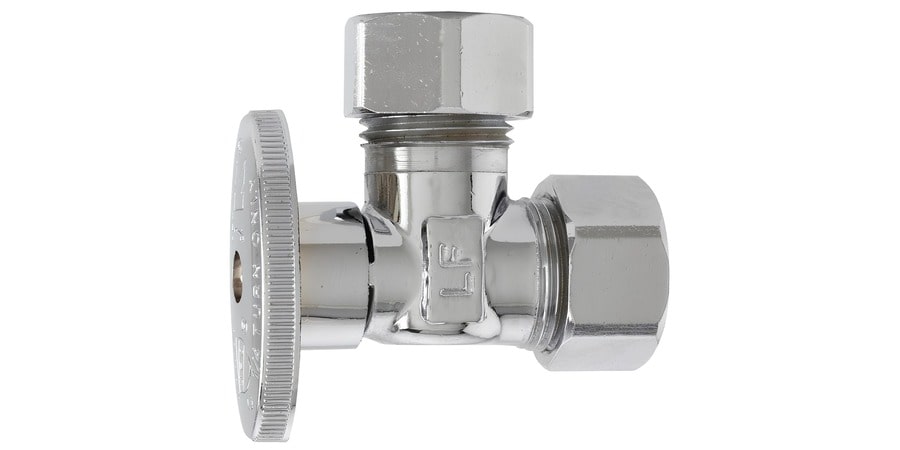The name “quarter-turn angle shut-off valve” arises from its straightforward construction and mechanism for opening and closing. A quarter-turn of the handle is enough to open and close the device. Upon rotation of the handle, the valve’s spherical design will either permit or impede flow within the control system.
Design of Quarter-Turn Angle Shut-off Valves

Quarter-turn angle shut-offs need to be precise. These are a more recent variety of valves constructed with ball valves. The hollowed-out ball can only be moved by rotating the valve in a 90-degree direction. When the valve handle is turned, the ball obstructs the path. The layout of quarter-turn valves is straightforward. Certain valve manufacturers view them as suspicious, while others regard them as a deviation due to their novelty.
Quarter Turn Angle Shut-off Valves Working Principles
Quarter-turn angle shut-off valves are constructed on a straightforward principle. The handle causes the ball to seal the aperture completely, halting the water flow. When the handle is retracted, water can flow via conduit as the ball undergoes rotation. These valves’ ease of use and operation contributes to their dependability and convenience.
Advantages of Quarter Turn Angle Shut-off Valve
Compared to other valve varieties, quarter-turn angle shut-off valves provide several benefits. Unlike alternative valve types like gate valves, they have an extended operational lifespan. In addition, they are straightforward to use; a quarter-turn of the handle is enough to start or end their operation. Additionally, their increased resistance to blockage makes them the material of choice in areas with hard water.
Features of Quarter Turn Angle Shut-off Valve
Water shut-off at a 1/4-turn angle designed for horizontal connections in which a water line traverses a wall. The valves regulate the passage of water through a simple on/off mechanism. A diverse range of connection types are available for use. In contrast, different valve manufacturers utilized varied materials. These materials are brass and stainless steel to meet the needs of their customers. The internal brass ball is corrosion-resistant and facilitates simple valve operation. However, the PTFE seats assure durability.
Durability of Quarter Turn Angle Shut-off Valve
With a hollowed-out ball and quarter-turn handle, quarter-turn angle shut-off valves have a straightforward construction. Their lifespan is generally extended compared to compression valves due to the absence of required grinding. However, its material composition and construction impact the valve’s durability.
Investing in superior quality is suitable when using a quarter-turn valve. Avoid approaching the valve while the plastic ball is inside. Instead, invest in a quarter-turn valve made of metal from a reliable valve supplier.

Reparability:
You cannot repair a quarter-turn valve when it starts leaking. It would be best if you replaced it. Quarter-turn valves close compared to compression valves. This works well when you need a quick response. However, not all applications react well to a quick shut-off.
A quick shut-off of water and other liquids can cause pipes to “hammer” or shake. This response causes undue stress on the pipes and their fittings.
Ease of Use:
An easy-to-operate valve is a must at a time of crisis. A shut-off at a quarter-turn angle is considered user-friendly. Compared to the many turns required by compression valves, their shut-off mechanism merely necessitates a quarter turn. The handle has been rotated only partially, indicating the valve is closed. Catching a quick glimpse at the valve will show that the application has been effectively turned off.
Applications of Quarter Turn Shut-off Valve
Quarter Turn Shut-Off Valves: Water Treatment
Quarter-turn shut-off valves are utilized in the water treatment industry. Adjusting the handle by a quarter turn means that a quarter-turn shut-off valve comprises a particular type of valve that discontinues water flow.
This capability to sever water flow is indispensable in critical circumstances like conduit ruptures or breaches. The reduced likelihood of clogging and corrosion contributes to these valves’ effectiveness in maintaining safe and efficient water treatment processes.
The tight seal is another feature that enables them to provide precise control with minimal leakage. In addition to distribution and storage, quarter-turn shut-off valves can be implemented at each stage of water treatment, including intake and filtration. They are utilized in various locations during purification, ensuring safe and adequate water flow regulation. It would be impossible to maintain enough water treatment without these vital tools.

Quarter Turn Shut-Off Valves: Oil & Gas
Emergency shutdowns are a prevalent phenomenon within the gas and energy sectors. Because quarter-turn shut-off valves are utilized for a variety of purposes in these industries, this is the case. Turning the valve handle allows these valves to deliver rapid turn-on and turn-off flow control in gas or hydrocarbon pipelines.
This capability enables prompt cessation or rerouting of fluids in emergencies, maintenance, or alterations in the flow direction. Unlike conventional gate valves, which need several rotations to obstruct the flow, they are operable during emergencies.
Quarter-turn cut-off valves are suitable for various industrial applications due to their resistance to high temperatures and pressures.
What Material Is Used To Produce Quarter-Turn Angle Shut-off Valves?
Brass, bronze, cast iron, and stainless steel are typical components of Quarter-Turn Shut-off Valves. They are used in gas, oil, and water lines.
The function of quarter-turn shut-off valves is to stop the gas or liquid flow rapidly. With a quarter-turn of the handle, these valves may be opened or closed. Both threaded and solder-end connections are available for these valves.
Summary
The benefits of 1/4-turn and multi-turn valves vary according to the application’s specific requirements. 1/4-turn valves are ideal for frequent on/off operation, rapid isolation, minimal pressure loss, and user-friendly operation.
